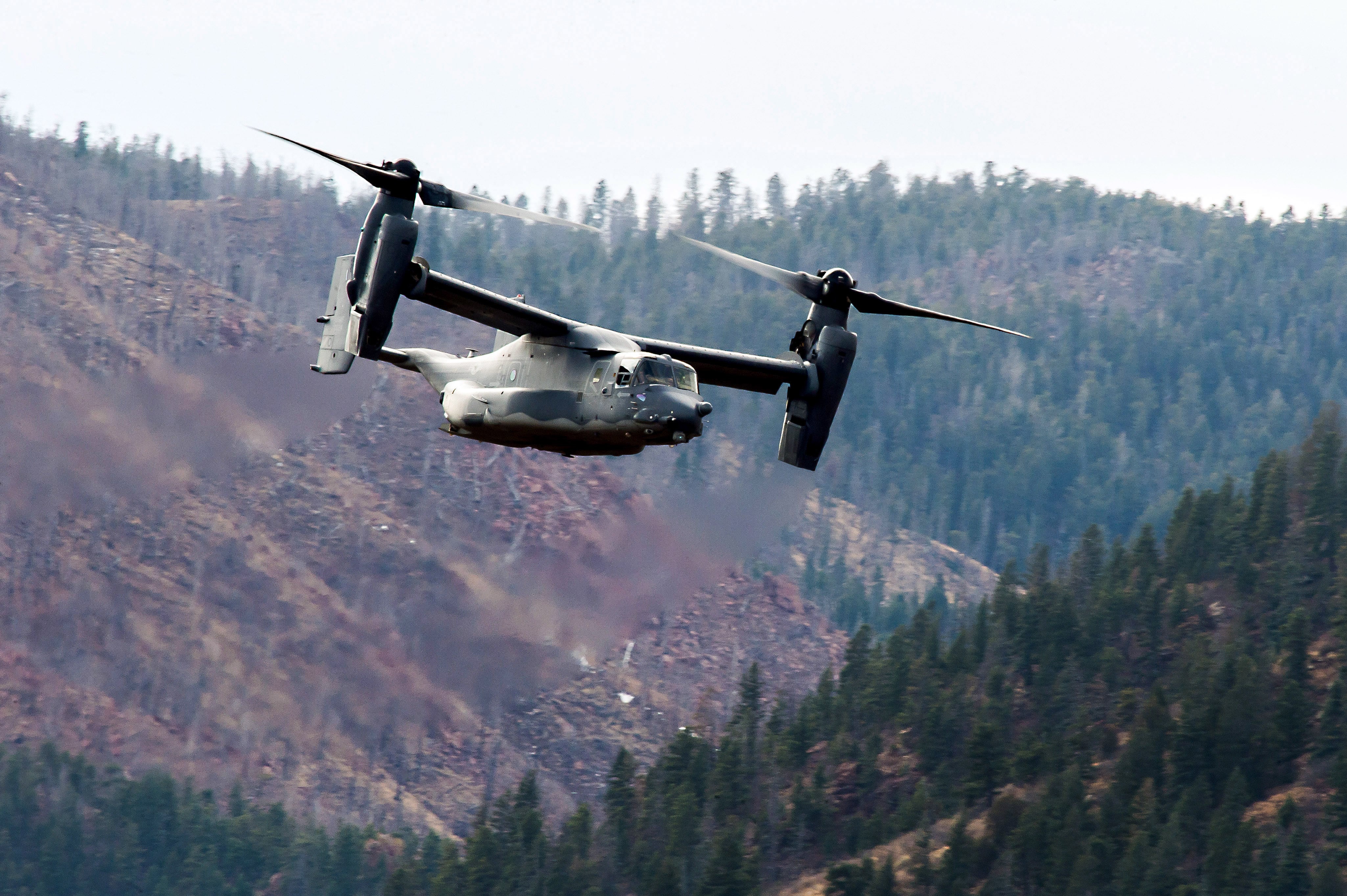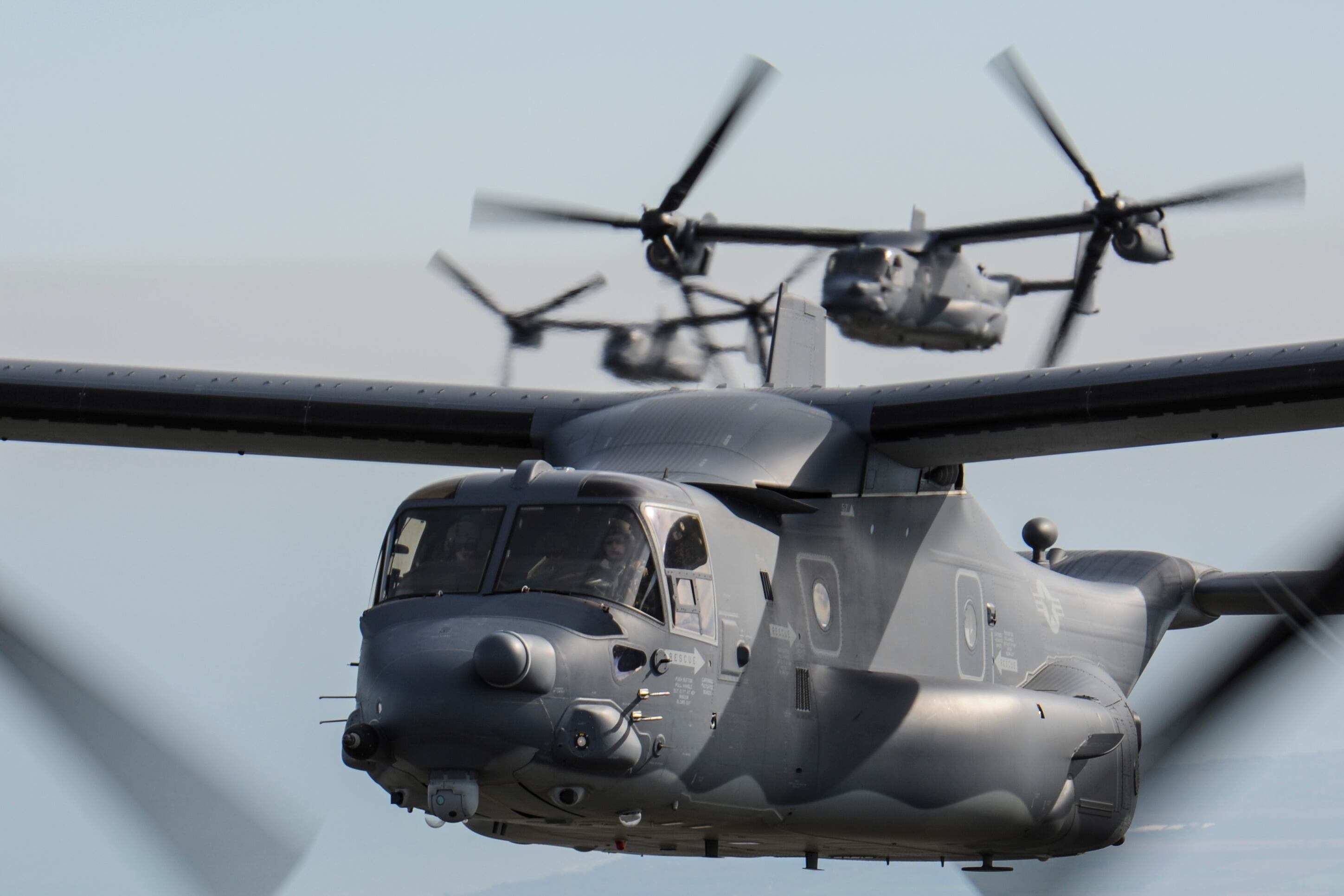U.S. and Japanese divers have discovered wreckage and the remains of five crew members from a U.S. Air Force Osprey aircraft that crashed last week off southwestern Japan, the Air Force announced Monday.
The CV-22 Osprey carrying eight American personnel crashed Nov. 29 off Yakushima island during a training mission. The body of one victim was recovered and identified earlier.
Air Force Special Operations Command said two of the five newly located remains have been recovered but their identities have yet to be determined. The joint U.S.-Japanese search operation is still working to recover the remains of three other crew members from the wreckage, it said.
The search is continuing for the two people who are still missing, it said.
“The main priority is bringing the airmen home and taking care of their family members. Support to, and the privacy of, the families and loved ones impacted by this incident remains AFSOC’s top priority,” the Air Force said in a statement.
The U.S. military on Dec. 2 identified the one confirmed victim as Air Force Staff Sgt. Jacob Galliher, 24, of Pittsfield, Massachusetts. Galliher enlisted in the Air Force in 2017 and became an airborne linguist specializing in Mandarin Chinese, accompanying special operations units on flights around the Pacific.
“With a ready smile, Jake brought the unit together on- and off-duty through humor and an inexhaustible supply of energy, whether it was on the aircraft, in the gym, or on the slopes with the team,” Air Force Maj. Gilbert Summers, commander of the 43rd Intelligence Squadron detachment where Galliher worked at Yokota Air Base in Japan, said in a statement Sunday. “Everywhere he went, and everyone he met, was made better for him being there. He has left an indelible mark as a devoted family man, steadfast wingman, and an irreplaceable airman in both duty and compassion.”
The U.S.-made Osprey is a hybrid aircraft that takes off and lands like a helicopter but can rotate its propellers forward and cruise much faster, like an airplane, during flight. Air Force special operations units use the CV-22 to slip in and out of areas without established runways, where fixed-wing planes may not be able to land with troops and supplies.
RELATED

Ospreys have had a number of crashes, including in Japan, where they are used at U.S. and Japanese military bases, and the latest accident has rekindled safety concerns. It remains unclear what caused the latest mishap.
Japan has suspended all flights of its own fleet of 14 Ospreys. Japanese officials say they have asked the U.S. military to resume Osprey flights only after ensuring their safety. The Pentagon said no such formal request has been made and that the U.S. military is continuing to fly 24 MV-22s, the Marine version of Ospreys, deployed on the southern Japanese island of Okinawa.
The 353rd Special Operations Wing at Yokota, to which the downed Osprey belonged, has halted CV-22 flights other than to aid in the search.
Pieces of wreckage that Japan’s coast guard and local fishing boats have collected were handed over to the U.S. military for examination on Sunday, coast guard officials said. Japan’s military said debris it has collected would also be handed over to the U.S.
Coast guard officials said the recovered pieces of wreckage include some parts of the aircraft and an inflatable life raft, but nothing related to the cause of the crash, such as an engine. Local witnesses reported seeing fire coming from one of the engines.
Local fishing boats have helped in the search efforts, giving up their daily catch. Public broadcaster NHK said the Defense Ministry plans to cover their lost income and fuel.
Under the Japan-U.S. Status of Forces Agreement, Japanese authorities are not given the right to seize or investigate U.S. military property unless the U.S. decides otherwise. That means it will be practically impossible for Japan to independently investigate the cause of the accident.
The agreement has often made Japanese investigations difficult in criminal cases involving American service members on Okinawa and elsewhere. It has been criticized as unequal by rights activists and others, including Okinawa Gov. Denny Tamaki, who has called for a revision.
More than 50 people have died in Osprey mishaps since 1992, according to a database maintained by the Flight Safety Foundation.
The Nov. 29 accident is the first fatal incident involving an Air Force-owned CV-22 since 2010. The crash may become the service’s deadliest since 2018, when nine Puerto Rico Air National Guard troops died in a WC-130 weather reconnaissance plane crash.
The crash also marks the second deadly U.S. special operations mission in November, after five soldiers died Nov. 10 in a MH-60 Black Hawk helicopter crash in the eastern Mediterranean Sea.
Rachel Cohen is the editor of Air Force Times. She joined the publication as its senior reporter in March 2021. Her work has appeared in the Washington Post, the Frederick News-Post (Md.), Air and Space Forces Magazine, Inside Defense, Inside Health Policy and elsewhere.





